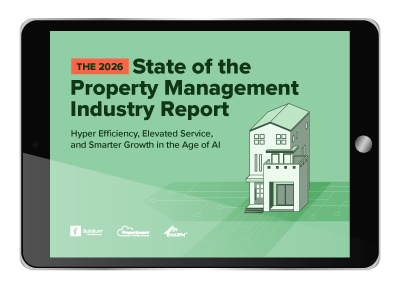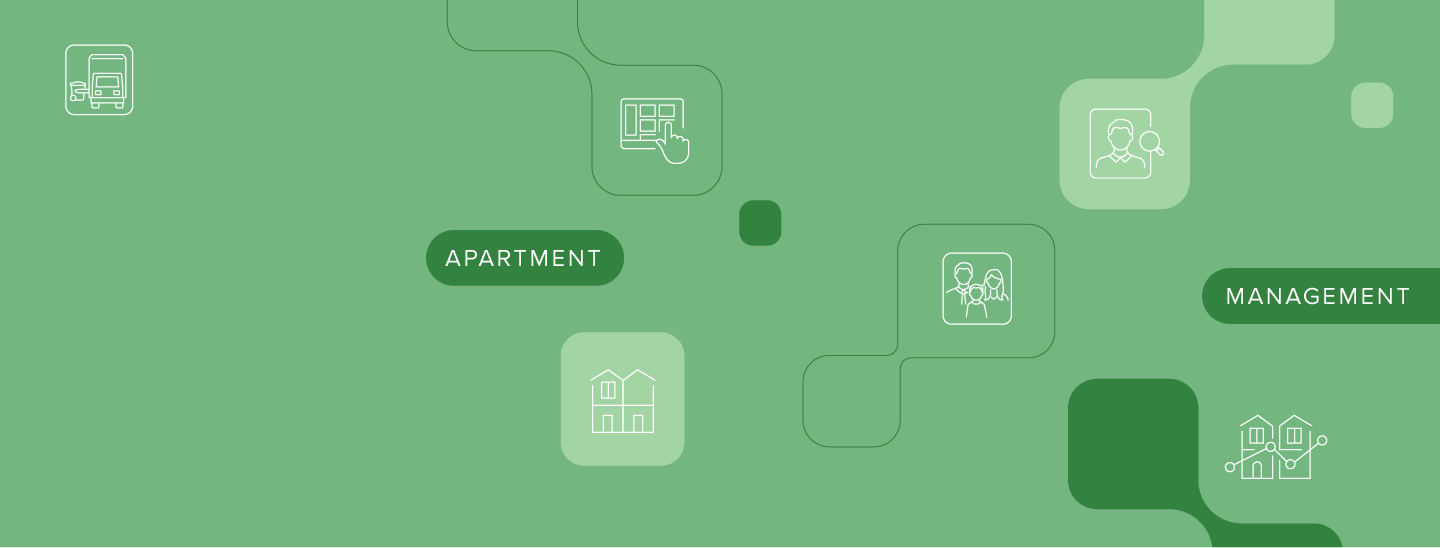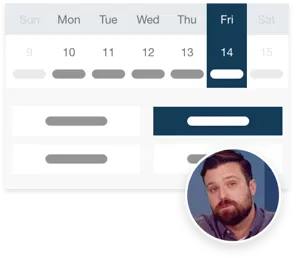Apartment communities face unique security challenges, especially in controlling access at entry points. With rising concerns about property crime and liability and more pressure for tech-enabled, convenient entry options, managing gate security has become both more important and more difficult for apartment managers.
Start your free trial today!
Try Buildium for free for 14 days. No credit card needed.
Start Your TrialThis guide explores everything property managers need to know about apartment gate security entry management. It covers types of entry systems, important features to consider, best practices for implementation, common challenges, and how to balance security with resident convenience.
Why Apartment Gate Security Entry Management Matters
Apartment complexes often have several access points, including vehicle gates, pedestrian entrances, and service areas. Controlling who enters these points impacts:
- Resident safety: Limiting access to authorized individuals reduces risks of theft, vandalism, and violence.
- Property protection: Preventing unauthorized vehicle and foot traffic guards communal and private property.
- Liability reduction: Keeping detailed access records helps property managers meet legal requirements and reduce liability.
- Community reputation: A secure, well-managed gated community attracts residents and prospects.
- Operational efficiency: Automated gate systems lower the need for manual security checks and reduce labor costs.
Without effective apartment gate security entry management, unauthorized visitors, trespassers, and criminals can access the property easily, putting residents and assets at risk.
Types of Apartment Gate Security Entry Management Systems
Property managers can select from various gate security technologies and configurations, depending on community size, layout, budget, and security goals.
1. Manual Gate Access Control
This basic form of gate security involves a guard or property staff manually controlling entry, usually from a guardhouse or checkpoint. Visitors check in, show identification, or receive approval from residents before entering.
- Advantages: Direct human oversight, immediate response to suspicious behavior, personal interaction with visitors.
- Limitations: High labor cost, slower entry during peak hours, possibility of human error.
This approach suits smaller communities or those requiring personalized visitor screening but is costly and inefficient for larger properties.
2. Keypad Entry Systems
Residents or staff enter a numeric code on a keypad to open the gate. Codes can be unique per resident or shared among tenants.
- Advantages: Low cost, simple installation, no physical keys required.
- Limitations: Codes can be shared or stolen, no tracking of individual entry, residents must remember codes.
Keypads work well in communities with tight budgets but offer limited security and monitoring.
3. Proximity Cards and Fobs
Residents carry RFID cards or fobs they wave near a reader to open the gate. The system logs each user’s entry.
- Advantages: More secure than keypads, easy to deactivate lost or stolen cards, access logs.
- Limitations: Costs for cards/fobs, possible loss or misuse.
Proximity systems offer better accountability and fit mid-size to large communities.
4. Mobile Access Systems
Smartphone apps authenticate users via Bluetooth, Wi-Fi, or NFC, allowing residents to open gates digitally.
- Advantages: No physical keys, easy to share or revoke access remotely, detailed audit trails.
- Limitations: Requires smartphones, occasional connectivity issues.
Mobile access grows in popularity as residents seek convenience.
5. License Plate Recognition (LPR)
Cameras read license plates and automatically grant access based on approved lists. Unknown vehicles are denied entry or flagged.
- Advantages: Contactless entry, fast processing, accurate vehicle ID.
- Limitations: Higher upfront cost, requires clear camera angles, privacy considerations.
LPR fits large communities with high traffic seeking automation.
6. Intercom and Video Gate Entry Systems
Visitors call residents or staff at the gate for approval. Video adds visual verification.
- Advantages: Visual screening improves visitor control, remote unlocking.
- Limitations: Residents or staff must answer calls, which can delay entry.
Intercoms improve security but depend on resident responsiveness.
7. Biometric Access Control
Systems use fingerprint or facial recognition to grant entry.
- Advantages: High security, cannot be shared or stolen.
- Limitations: Expensive, privacy concerns, limited practicality in residential settings.
Biometric access remains niche but may expand with technology advances.
Important Features in Apartment Gate Security Entry Management
Beyond system type, these features impact security effectiveness and suitability.
Access Control and Authentication Options: Choose systems offering multiple authentication methods to meet resident needs and boost security, such as combining a fob with a PIN.
Audit Trails and Reporting:
Keep detailed, searchable logs of entries and exits with timestamps and user IDs to support investigations and liability defense.
Scalability and Flexibility: Select systems that can grow with your community or integrate with other security measures such as cameras and alarms to avoid costly replacements.
Resident and Visitor Management: Offer residents simple ways to grant visitor access through temporary codes, remote unlocking, or visitor registration portals to improve the overall tenant experience.
Integration with Property Management Software: Synchronizing resident and vehicle data reduces administrative work and errors.
Remote Monitoring and Control: Cloud-based or networked systems let managers or security staff monitor gate activity and control access remotely for faster response.
Backup and Fail-Safe Operations: Choose systems with battery backup, manual overrides, or fail-safe settings to maintain access during power or network outages.
User-Friendly Interfaces: Ensure residents, visitors, and staff find the system easy to use to prevent frustration and security workarounds.
Best Practices for Implementing Apartment Gate Security Entry Management
Proper implementation goes beyond installing hardware. Follow these steps to optimize security.
Conduct a Thorough Security Assessment: Analyze property layout, traffic patterns, resident demographics, and security risks. Identify vulnerable areas and busy times to guide system choice.
Engage Stakeholders Early Involve residents, staff, and security teams in planning to gather input and build support for new procedures.
Develop Clear Policies and Procedures: Set rules for access privileges, visitor management, and lost credential replacement. Communicate policies clearly to all parties.
Educate Residents and Staff: Provide training, guides, or tutorials to help users learn new access methods and resolve issues quickly.
Schedule Regular Maintenance: Perform routine inspections, updates, and repairs to keep hardware and software functioning reliably.
Incorporate Emergency Access Options: Plan for manual gate release and emergency contacts to maintain safety during outages or evacuations.
Monitor Performance and Gather Feedback: Review entry data, incident reports, and user feedback to identify improvements and adjust procedures.
Common Challenges in Apartment Gate Security Entry Management
While you can’t plan for every potential problem that comes with introducing a new security system, there are a few common issues that apartment managers face. By anticipating and addressing these issues early, you’ll be able to keep your security investment effective and working as intended.
Balancing Security and Convenience: Avoid complicated procedures that frustrate residents and encourage bypassing security.
Respecting Privacy: Be transparent about data collected through cameras or biometric systems, follow regulations, and protect user information.
Managing Visitor Access: Use well-designed workflows with temporary codes or host approvals to allow visitors without weakening security.
Preventing Tailgating: Install physical barriers, sensors, or assign patrols to stop unauthorized individuals from following authorized vehicles.
Budgeting for Costs: Plan for initial investment and ongoing maintenance to avoid surprises.
Making Sure Systems Are Compatible: Choose technologies that integrate smoothly with existing infrastructure and software.
Recommendations for Apartment Gate Security Entry Management Tech
There are a few options out there that offer both hardware and software for apartment gate security, but one of the most trusted ones is ButterflyMX. The company’s smart intercom and access control system replaces outdated keypads and call boxes with a cloud-based platform. Residents, guests, and delivery drivers can access gates using smartphones, PINs, or virtual keys.
At the gate, ButterflyMX functions as a secure access point. Residents can open the gate remotely through the mobile app or share temporary access with visitors using one-time or scheduled virtual keys. When a visitor arrives, they use the touchscreen intercom to call the resident, who receives a video call and can unlock the gate from anywhere. This setup lets residents verify who’s at the gate before allowing them in while apartment managers get a detailed log of each entry event.
ButterflyMX also syncs with other software and is part of Buildium’s Marketplace. That means that you can connect the platform with Buildium’s full range of apartment management tools that cover everything from rent collection and leasing to maintenance and accounting. If you want to learn more about Buildium, you can test out easily (and for free) with a 14-day trial or guided demo.
Apartment gate security entry management forms the first defense line for residential communities. Selecting and implementing the right system protects residents, assets, and reputations while enhancing the experience for your residents.
Begin with a detailed assessment, involve your residents, and choose a scalable, adaptable solution. Investing in thoughtful apartment gate security entry management delivers lasting peace of mind.
Frequently Asked Questions
What is apartment gate security entry management?
It is the set of methods and technologies used to control and monitor access to apartment community gates, ensuring only authorized people and vehicles enter.
How do I choose the best gate entry system for my community?
Consider property size, resident preferences, budget, desired security level, and integration with other systems. Conduct a thorough assessment and involve stakeholders before deciding.
How can I balance security with resident convenience?
Offer multiple access options, clear communication, easy-to-use interfaces, and visitor management tools that reduce barriers while maintaining control.
What are common problems with gate security systems?
Issues include tailgating, lost credentials, system downtime, privacy concerns, and residents bypassing security due to complicated procedures.
How often should I maintain or update gate security systems?
Regular maintenance should happen at least twice a year, with software updates and system reviews conducted as needed to address vulnerabilities or add features.
Read more on Multifamily

